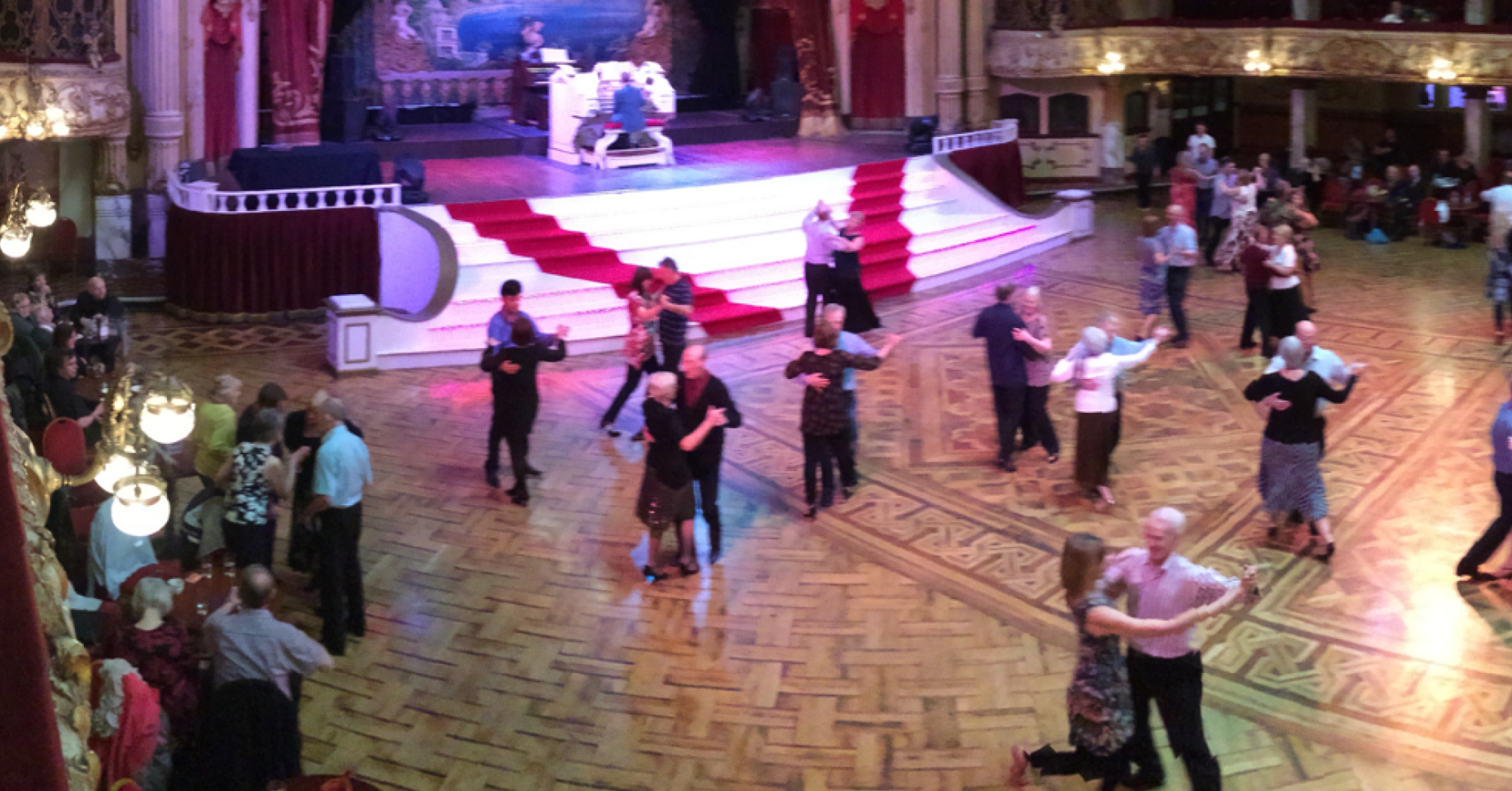Now that we’ve looked at the basics of how turns work and how they differ between rhythm and smooth dance styles, what are the qualities behind a well-executed dance spin? As you practice, you will gradually increase your mastery over each of these 5 elements, allowing you to make every turn unique, and uniquely yours.
Balance
A dance spin without balance is like a plane taking off with low fuel – the beginning might go well, but the landing is likely to be rough.
‘Balanced’ in this case means being able to stop and hold on a foot without falling over. Practice this before you work on anything else.
Connection
Your connection with your partner during a dance spin is what helps you know where they are, and allows the leader to guide the follower through more challenging steps. Keep a strong frame, with your turning arm in an L-shape in front of you, and remember that connection is just as important when entering and leaving a dance spin as well.
Speed
Once you’ve got balance and connection figured out, we can start getting creative. How fast you spin is tied to the beat of course, but what if you want to syncopate it (turn twice as fast over the usual number of beats), or slow it down to make it dramatic or fill the music better? Varying the speed of your dance spins help you stand out from the average dancer.
Sharpness
Coupled with speed is the sharpness of a dance spin – that is, how quickly we snap from stationary to turning, to stationary again. This also depends on the music:
A sharper turn conveys power and precision, and is often matched with sharper staccato notes, as in many tangos, for instance.
Less sharp dance spins have a softer quality, and might be used in gentler dances like waltzes or American rumbas.
Style
Finally, there’s arm and body-shaping you can add to further personalize your dance spins. No one style works for all spins, so practice them in the patterns you plan to use them in. For instance, a salsa free spin might include a double hair comb, with hands sweeping down the sides of the body. A waltz box with underarm turn is usually more elegant, with the free arm sweeping up over the head and deliberately lowering to frame your opposite cheek. Expect people to start complimenting you after dances if you can pull these off well!
It’s important to always fall back to balance and connection if you have trouble with the other elements – otherwise, you’re just building the roof while the ground floor collapses. In our next section, we start looking at specific turns, with some important advice to get you started on mastering each one!
